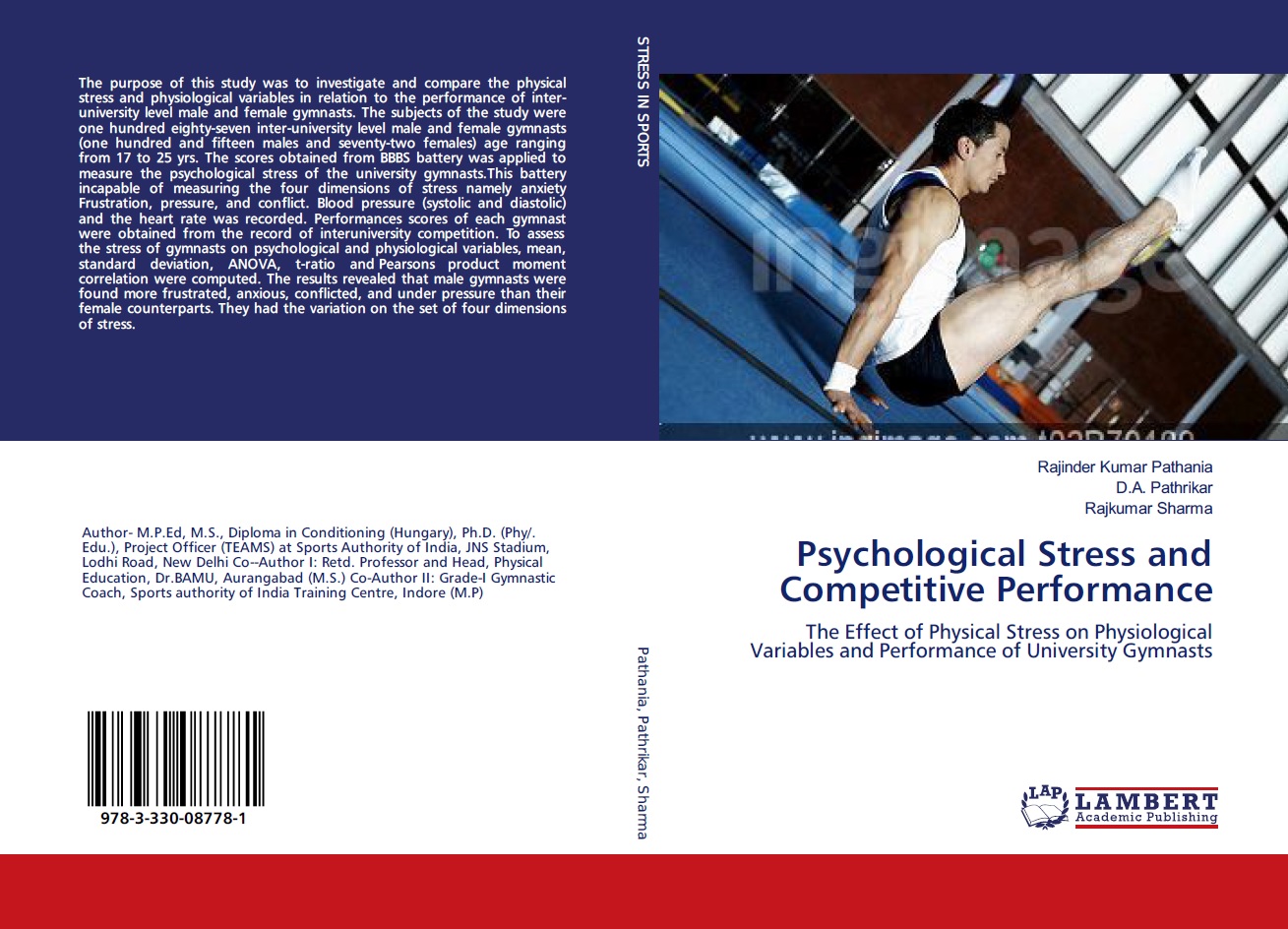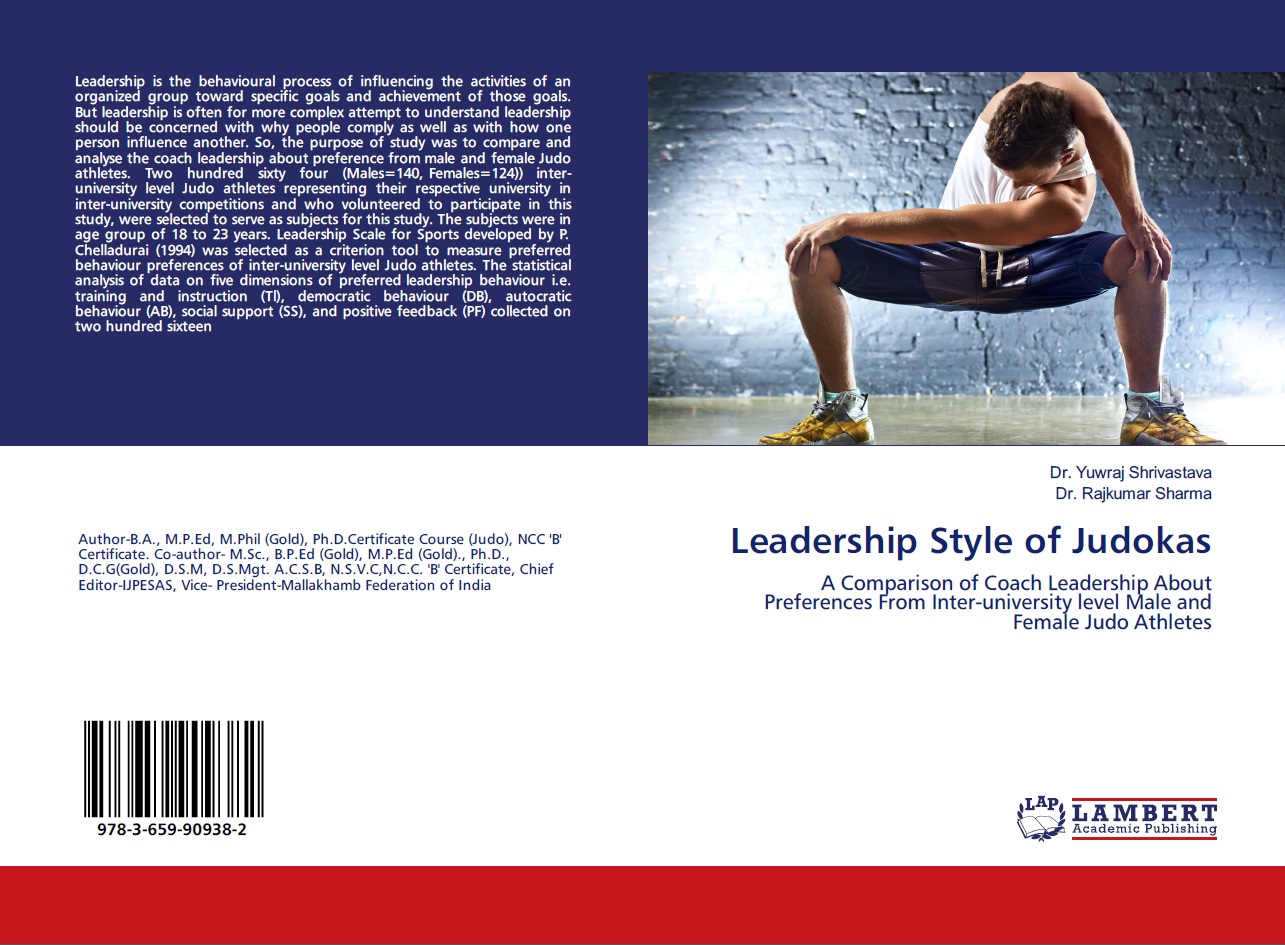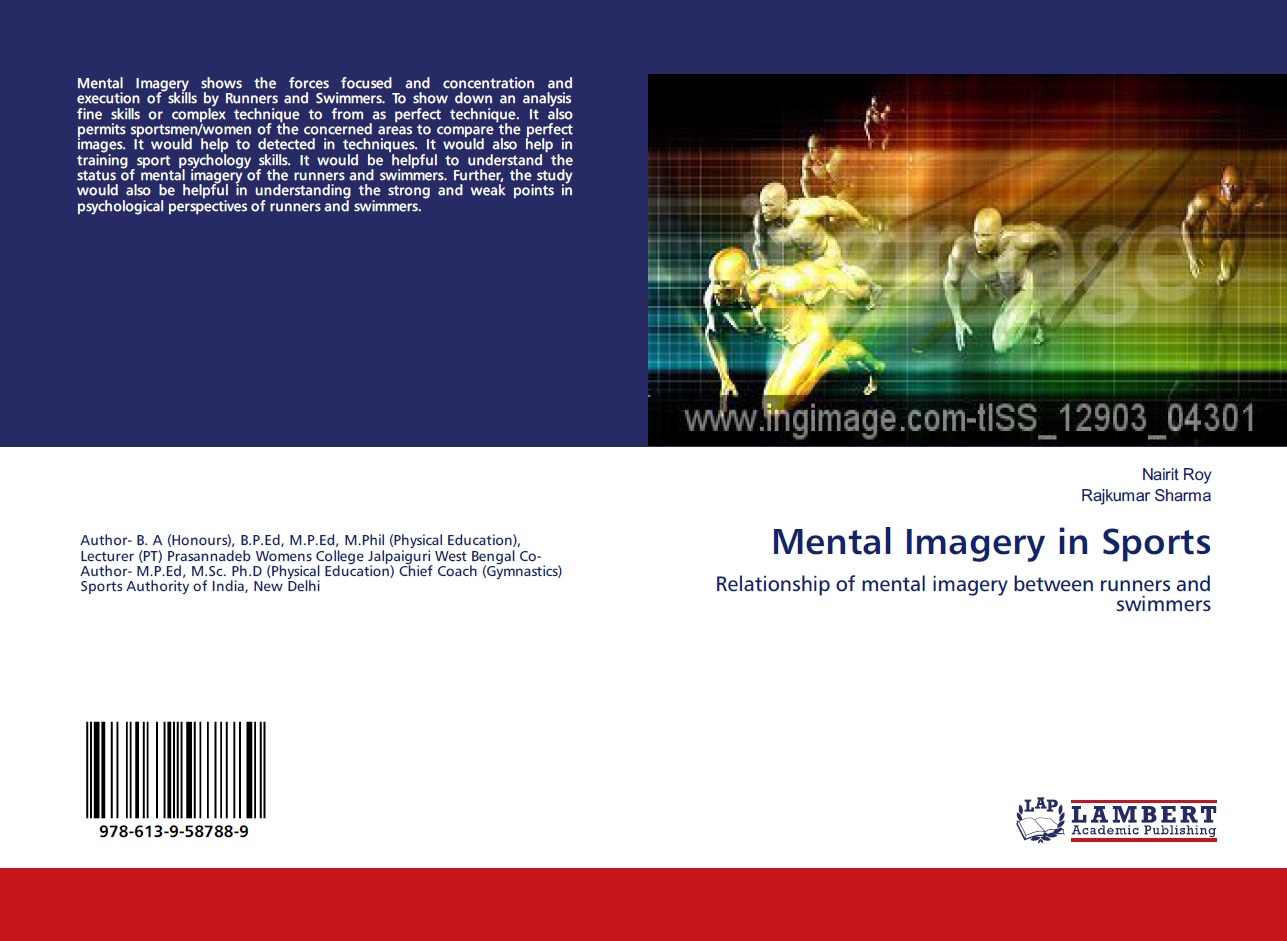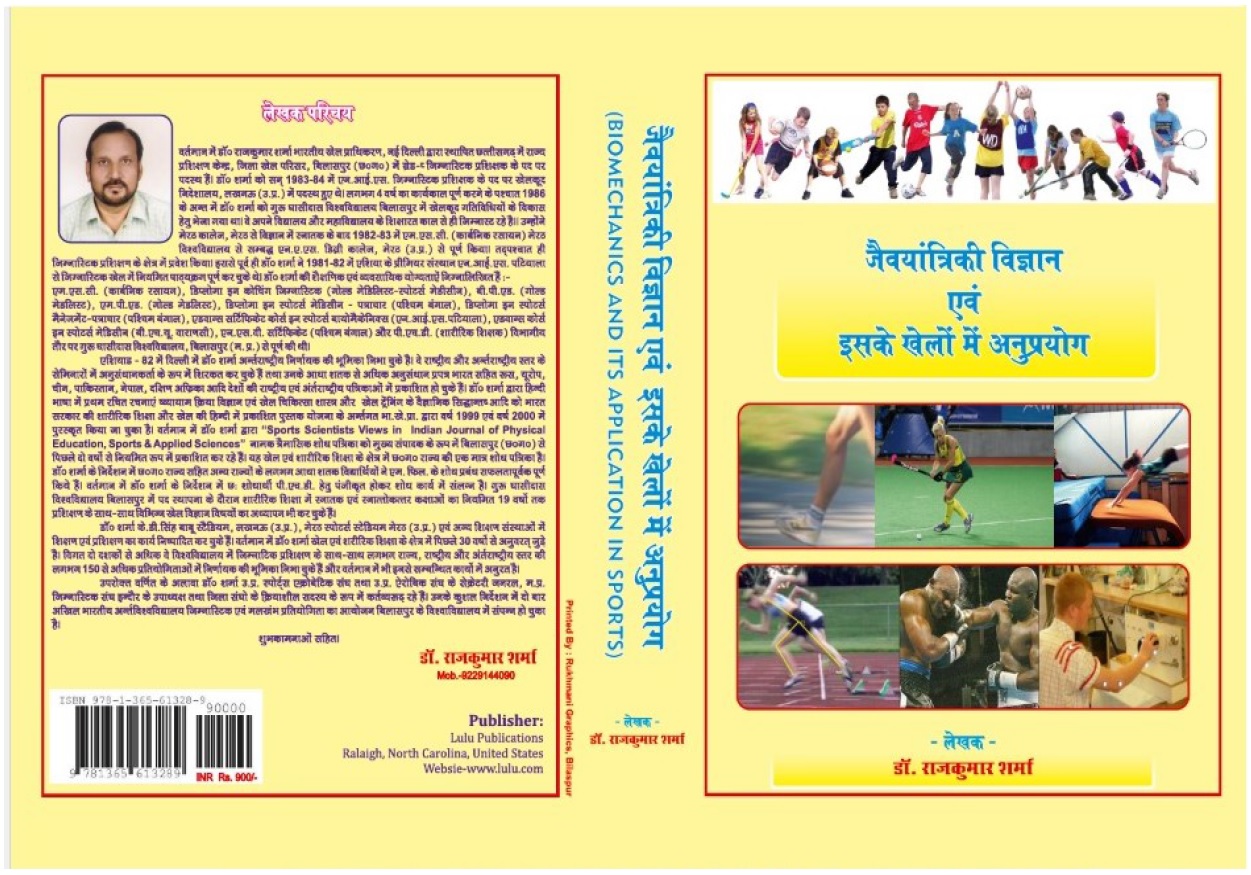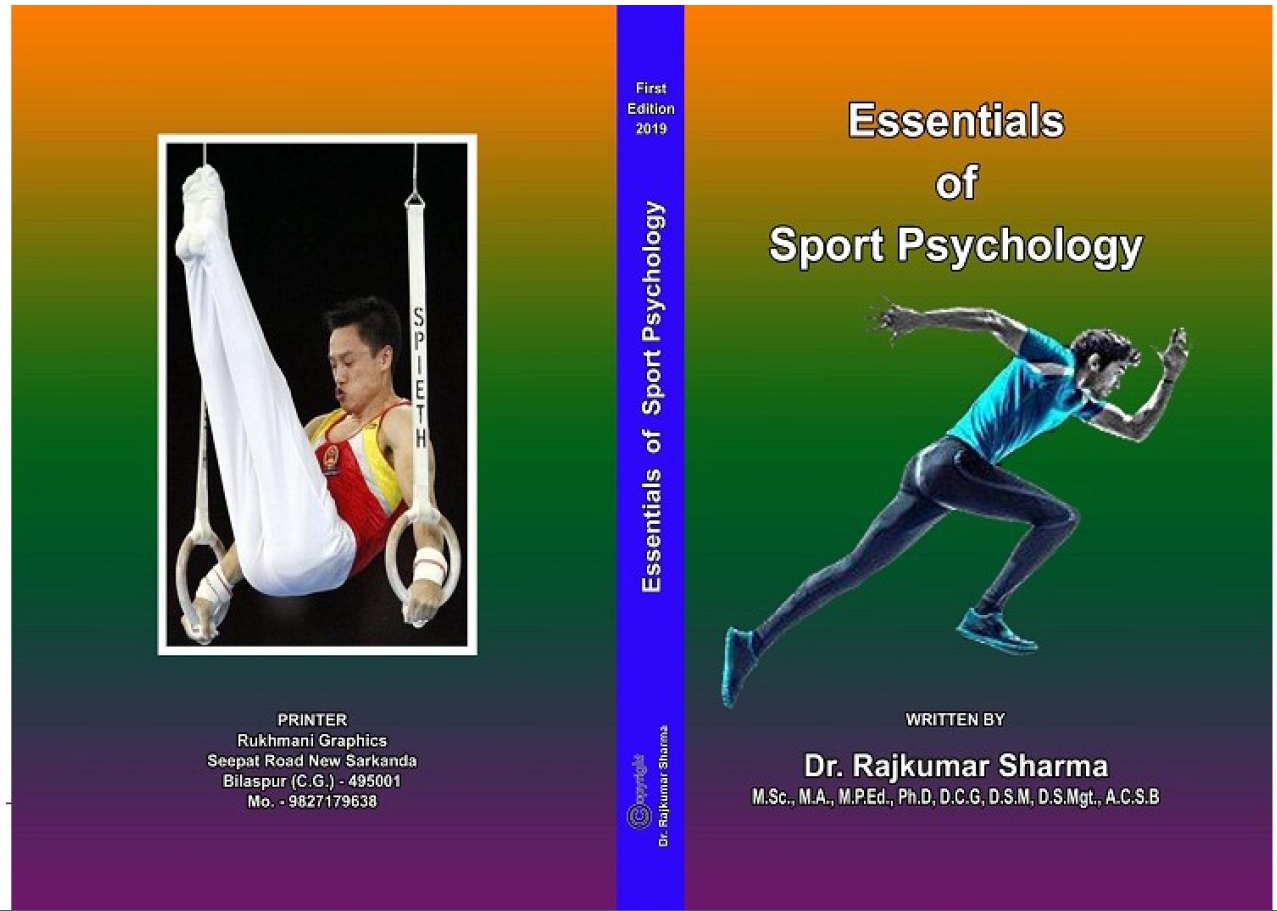| S.No. | Total View Count | Title of Manuscript | Page No | Download/ PDF |
|---|---|---|---|---|
| 1 | A COMPARATIVE STUDY OF PERSONALITY TRAITS OF MALE KABADDI PLAYERS OF DIFFERENT LEVELS Author: Dr. Rajkumar Sharma1 and Dr. Ashish Kumar Nigam2 | 116-125 |  9 9 |
Article info
doi no.: 05-2016-44975451,
DOI Link :: http://doi-ds.org/doilink/02.2021-23483585/IJPESAS/2021/JAN/V11/I1/A17
AFFILIATIONS:
- Chief Gymnastic Coach, Sports Authority of India, posted at NSTC, Malhar Asharam, Indore (M.P.) ,9229144090, E-mail - sharmagym59@yahoo.co.in
- Sports officer, JNKVV, Jabalpur MP, dr.aknigam@gmail.com, Mob. 9826348748
The purpose of the study was to assess and investigate the personality characteristics of male Male Kabaddi Players at different levels of their participation. The sample consisted of one hundred and fifty (Intercollegiate level=50, State level=50, Inter-university level=50) male Kabaddi players from universities and colleges running in Chhattisgarh state, who have taken part in intercollegiate, state and inter-university level Kabaddi tournament. Propulsive research design was used for the purpose of study. Eysenck's Personality Questionnaire-R (E.P.Q.-R) prepared by Eysenck and. Eysenck [16] was selected to measure the four dimensions of personality of national level Gymnasts of India. The Eysenck's Personality Questionnaire- R (E. P. Q.-R) is a valid and reliable instrument. In order to find out the significant difference among male Kabaddi Players of different levels, , mean, SD and F-ratio were computed, level of significant was set at .05 level. The results of analysis indicated that the Neuroticism, psychoticism and social desirability temperaments were found high in state level kabaddi players than their counter parts. where as , Extroversion temperament was high in Intercollegiate level kabaddi players than their counter parts. F-ratio resulted significant difference among male kabaddi players of three different levels of participation in their neuroticism temperament. But they did not differ significantly in their rest of the temperament of personality.
Keywords: Male, Kabaddi, Personality Factors, State, Intercollegiate and Inter-university levels.
References
Eysenck, H. J., & Eysenck, S. B. G. (1991).Manual of the Eysenck Personality Scales (EPS Adult). London: Hodder &Stoughton
Borgatta, Edgar F. and Lambert, William W. (1968). Child, personality in culture in Handbook of personality theory and research, Chicago, Rand McNally Publishing Company.
Kirkcaldy, B., & Furnham, A. (1991). Extraversion, neuroticism, psychoticism and recreational choice.Personality andIndividual Differences, 12: 737–745.
Brinkman, C. (2013). The Big Five personality model and motivation in sport. Master’s degree Thesis. De-partment of Kinesiology and Health, Faculty of Miami University, Oxford, Ohio. Retrieved in June 2016, from https://etd.ohiolink.edu/!etd.send_file?accession=miami1375299442&disposition=inline.
Bawa, G. S. and Debnath, K. (1989), Strength Variables towards Competitive Performance in Men Artistic Gymnastics, .N.I.S. Scientific Journal, 12(3):25-30.
Booth, E.G. Jr (1958), Personality Traits of Athletes as measured by M.M.R.I, . Research Quarterly, 29 :127-138.
Bhushan, S. and Agarwal, V (1978), Personality Characteristics of High and Low Achieving Indian Sports Persons, International Journal of Sports Psychology, 9(3): 191-198.
Clarke, Scott A. (1973), Psychological Characteristics of Athletes and Non-participants in Athletics, Completed Research in Health, Physical Education and Recreation, 15: 155.
Costa P.T. and McCrae, R.R. (1992) Professional Manual of the Revised NEO Personality Inventory, FL: Psychological Assessment Resources. .
Carron, A. (1980) Social Psychology of Sport. Movement Publications : Ithaca, NY.
Cattell R.B. (1965), ‘The Scientific Analysis of Personality’. Baltimore. Md. Penguin Books, Inc.. https://doi.org/10.1002/1520-6807(196601)3:1
Dureha, D.K. (1987), Comparison of Personality Characteristics of Sportsmen and Non-Sportsmen. SNIPES Journal, 10 (1 & 2) : 26-30.
Devon, S.(2000), Character Theory, Translator by Y. Karimi, et al., Arasbaran Press Publishing
Davis, C. and Mogk, J. P. (1994), ‘Some Personality Correlates of Interest and Excellence in Sport’. International Journal of Sport Psychology, 25 (2): 131-143.
Eysenck S. B. G. and Eysenck H. J., Manual of the E. P. Q. -R(Personality Questionnaire) Lon: Hodder and Stoughton Educational: San Diego Educational and Industrial Testing SERVIVE, 1975
Eysenck, H. J . (1952), Scientific Study of Personality, London: Routledge and Kegan Paul.
Eysenck, H. J. (1947), “Dimensions of Personality”. London: Routledge and Kegan Paul. London (1947): Rutledge.
Eysenck, H.J. (1992). The definition and measurement of psychoticism, Personality and Individual Differences, 13(7), 757-785. https://doi.org/10.1016/0191-8869.
Frank H “Two Agency Cost Explanations of Dividends”. 74 AmericanEconomic Review, (1984):PP.650-659.
Goldberg, L,R. (1993), The structure of phenotypic personality traits. American Psychologist, 48:26–34.
Hein, M. (1954), A Comparison of Certain Personality Traits of College Women to Selection of Activities for Physical Education Instruction. Master’s thesis, Women’s College University of North Carolina.
Hunt, D. H. (1969): A Cross Racial Comparison of Personality Traits Between Athletes and Nonathletes. Research Quarterly, 40:421-425.
Jaipal and Siwach, Rajesh Kumar A (2013), Study of Personality Characteristics Young Kabaddi Players of Navodaya Vidyalaya Samiti, India Res. J. Physical Education Sci 1(3): 1-4,
Joshi, B. K. & Vakani, V. S. (2011), Personality differences between inter-collegiate level Kabaddi and volleyball players. Journal of Advances in Developmental Research,1(2) :.266-267
Jyothi, K. and Sudhakara, G (2019), Selected psychological characteristics and performance of state level kabaddi male players -A relationship study. 6 (1): 712-Z
Joan, Elise Duba (1981), “A Comparison of Personality Characteristics of Adult Women Athletes, Young Adult Women, Athlete and College Women Athletes-A Study of Assertive Behavior in Sports”. Dissertation Abstract International, P.205.
Rao, Prasad E. (2002) “A Complete Handbook on Kabaddi”, Jagadamba Publications, Vizianagaram, A.P., p. 1
Kamlesh, M L (1986), A Comparative Study of Extraversion and Neuroticism in Track and Field Athletes, Research Bi Annual for Movement, 3 (1).
Kirkcaldly, B. D. (1982), Personality and Sex Differences Related to Positions in Team Sports, International Journal of Sports Psychology, 13: 141-153.
Kuravatti, Kum Paramma B and Malipatil, Rajkumar P (2017), A comparative study of personality traits between individual and group game, International Journal of Physical Education, Sports and Health, 4(1): 13-15
Kane, J.E (1968), Personality and Physical abilities, Proceedings of the second International Congress of sport Psychology, Chicago: Athletic Institute.
Karad, P.L. (2010) Gender Differences in Personality Characteristics of Kabaddi Players, Variorum,Multi-Disciplinary e-Research Journal Variorum, 1 (II): 1-6
Karad, P.L. & Wahid Abdul (2011) Personality Characteristics of Kabaddi and Kho-Kho Players Variorum,Multi-Disciplinary e-Research Journal, 1 (III): .1-4
Maan, Sahadev (2017). Personality differences : A comparative studybetween Ist and IVth position holder male kabaddi team players of north zone.Internat. J. Phy. Edu.,10(1&2) : 11-15,
Mohan J “Comparative Study of Extraversion, Neuroticism and Attitude towards Sports of Handball and Non-Players”. SNIPES Journal (1979):2:1.
Malumphy, T. M. (1970), Personality of Women Athletes”. Research Quarterly 41: 446-453.
McKelvie, S. J., Lemieux, P. and Stout, D. (2003), Extraversion and neuroticism in contact athletes, no contact athletes and non-athletes, Online Journal of Sport Psychology, 5; 3: 19-27.
Smojver-Azic, Sanja.,An?elic-Bres, Sandra and Donlic Veno (2001). Personality traits and coping with stress among adolescent athletes and non- athletes. Faculty of Philosophy, Rijeka, Croatia.
Rushall, Ellison (1970), An Evaluation of the Relationship between Personality and Physical Performance Categories”. In Contemporary Psychology of Sport,, ed. G. S. Kenyon. Chicago:Athletic Institute
Rushall, B. S. (1967) ‘An Investigation of the Relationship between Personality Variables and Performance Categories in Swimmers, Ph.D. thesis, Indiana University.
Singh, A. P. and Singh S. (1986): Anxiety, Neuroticism and Extraversion among the Cricket Players and Non-sportsmen. In: Psychological Analysis of Sports Performance (ed.) N.N. Mall & J. Mohan, Gwalior LNCPE, 48-55.
Sharma, Rajkumar and Chaubey. Devarshi Kumar (2016), Investigation of Personality Characteristics of National Level Male and Female Gymnasts, . International Journal of Sports Science and Physical Education. 1 (1) :1-5. doi: 10.11648/j.ijsspe.20160101.11
Slusher, H.S. (1964): Personality and Intelligence Characteristics of Selected High School Athletes and Non-Athletes. Research Quarterly, 35 : 539-545
Shariati, Marina & Bakhtiari, Sabah (2011), Comparison of personality characteristics athlete and non-athlete student, Islamic Azad University of Ahvaz Procedia - Social and Behavioral Sciences 30 :2312 – 2315.
Singh, Mahendra Kumar and Singh, Arvind Bahadur (2012), comparative study of selected personality traits between male and female inter collegiate volleyball players, Indian Streams Research Journal::2 (11) : .1-5.
Shankar, G. (1986) ‘Personality of Indian Varsity Male Gymnasts’. In: N.N. Mall and J. Mohan (Ed).Psychological Analysis of Sports Performance, Gwalior, LNCPE.
Singh, A. and Barar, R. S (1987), “A Study of Extraversion, Neuroticism and Self- Concept of University Handball Players”. In L.S. Sidhu and D. N. Mathur. (ed) Sport Sciences. Health Fitness and Performance, Patiala: IASSPE, PP.25-254.
Shergill, Harpeet (1991), Application of Discriminant Analysis of Personality Different between Successful and Non-succsessful Players”. Fit International and Sixth National Conference of Sport Psychology Abstracts. (Feb 1991):P.2.
Vanek M, Cratty B (2000), Psychology and the superior athlete, Journal of Psychology 4: 56-59
 admin@sportscientistsviews.com
admin@sportscientistsviews.com

